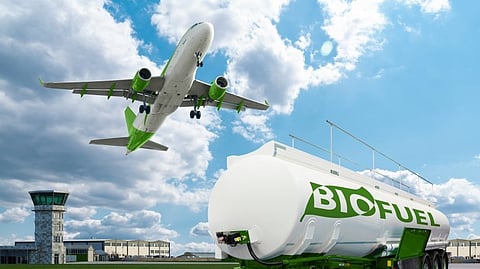SAF Production to Triple in 2024: IATA
The International Air Transport Association (IATA) announced that its projections for a tripling of Sustainable Aviation Fuels (SAF) production in 2024 to 1.9 billion liters (1.5 million tonnes) are on track.
This would account for 0.53% of aviation’s fuel need in 2024. To accelerate SAF use, there are several policy measures that governments could take.
Willie Walsh, IATA’s Director General said: “SAF will provide about 65% of the mitigation needed for airlines to achieve net zero carbon emissions by 2050.
"So the expected tripling of SAF production in 2024 from 2023 is encouraging. We still have a long way to go, but the direction of exponential increases is starting to come into focus.”
Renewable Fuel Production and SAF
Renewable fuel production is shared by many industries and SAF is a part of renewable fuel production. That is why increasing the production of renewable fuel is key to increasing the potential of SAF.
Some 140 renewable fuel projects with the capability to produce SAF have been announced to be in production by 2030.
Kuehne+Nagel Delivers World’s First 100% SAF-based Transatlantic Air Cargo
If all of these proceed to production as announced, total renewable fuel production capacity could reach 51 million tonnes by 2030, with production capacity spread across almost all regions.
Renewable fuel production potential could exceed this estimate as investor interest in SAF grows.
With a typical three-to-five-year time lag from planning to production, investment announcements as late as 2027 could be in production by 2030. At the same time, it is also clear that not all announcements reach final investment decisions.
Through the International Civil Aviation Organization (ICAO), governments set an ambition to achieve a 5% CO2 emissions reduction for international aviation from SAF by 2030.
To achieve that ambition, around 27% of all expected renewable fuel production capacity available in 2030 would need to be SAF. Currently, SAF accounts for just 3% of all renewable fuel production.
Potential Policy Measures to Boost SAF Production
There are several potential solutions to accelerate aviation’s access to critical SAF quantities:
Diversify feedstocks: About 80% of SAF expected to be produced over the next five years is likely to come from hydrogenated fatty acids (HEFA): used cooking oils, animal fats, etc.
Accelerating the use of other certified pathways and feedstocks (including agricultural and forestry residues and municipal waste) will greatly expand the potential for SAF production.
Co-processing: Existing refineries can be used to co-process up to 5% of approved renewable feedstocks alongside the crude oil streams. This solution can be implemented quickly and materially expand SAF production.
However, policies must be put in place urgently to facilitate consistent life-cycle assessments.
Incentives to improve the output mix at renewable fuel facilities: The current renewable fuel facilities are designed to maximize diesel production and often benefit from incentives in addition to the long-standing demand from road transportation.
As road transport transitions to electrification, policies should be established to shift production toward the long-term need of air transport for SAF. Incentives aimed at SAF can help facilitate the renewable diesel-SAF switch, which requires minimal modifications at existing stand-alone renewable fuel facilities.
Incentives to boost investments in renewable fuel production: The production of all renewable fuels will need to scale up rapidly, and among them, the need for a growing share of SAF production will necessitate strong policy support.
One such clearly articulated policy is the US Grand Challenge and the $3 billion of investments it supports. Stable, long-term tax credits would further maximize SAF production capability in both existing and new facilities.
Walsh concludes: "No one policy or strategy will get us to the needed levels. But by using a combination of all potential policy measures, producing sufficient quantities of SAF is absolutely possible."
Read More: DHL and Prada Group Contribute to More Sustainable Air Freight with SAF


